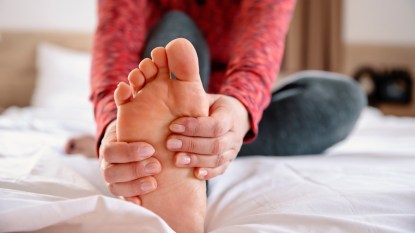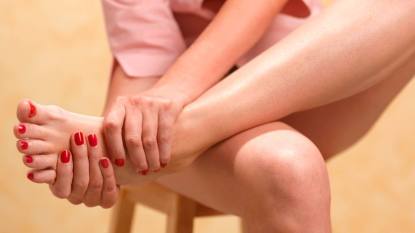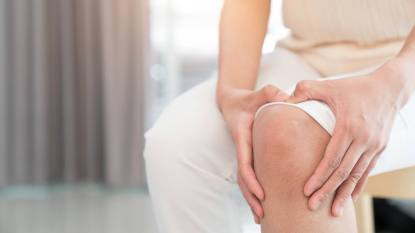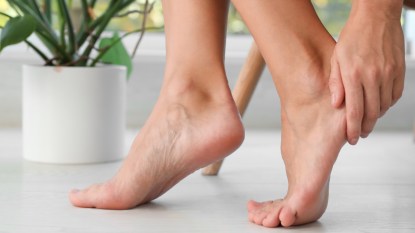What Causes Inside Knee Pain + How Can You Fix It? Experts Share Home Remedies That Actually Work
Plus see the knee pain exercise videos that restore range of motion
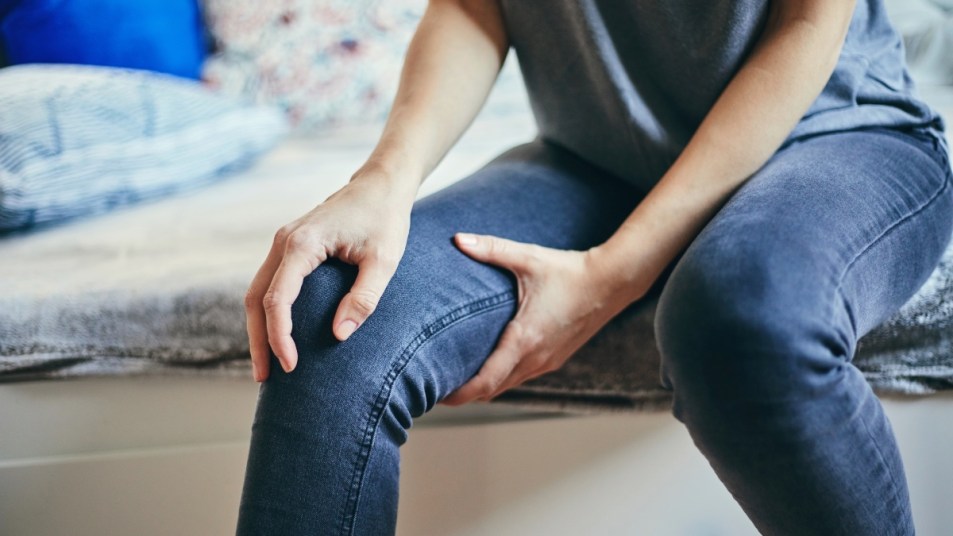
If you suffer from achy joints, there’s a good chance your knees are one of the main culprits. It’s estimated that knee pain affects 25% of adults and is responsible for over 4 million primary care visits a year. Inside knee pain, or intra-articular knee pain, is a common complaint for those with knee pain. The good news: You can enjoy everything from morning walks with Fido to pickleball games with friends again ache-free, thanks to these expert-backed tips.
What exactly is inside knee pain?
“Inside knee pain manifests in several ways, depending on what the patient feels,” says Vehniah Tjong, MD, an orthopaedic surgeon and sports medicine specialist at Northwestern Medical Group. Dr. Tjong says the main symptoms of inside knee pain include:
- Dull, achy pain
- Sharp, stabbing pain
- Swelling
- The joint catching or “clicking”
- Knee locking or instability
Depending on what is causing your inside knee pain (more on that below), Allie Paul, PT, DPT, a physical therapist for the Hospital of Special Surgery in New York City, says you’ll notice symptoms in one of three places. That includes the medial inside of the knee, or the part closest to your opposite leg, the meniscus, or the cartilage inside your knee or the medial collateral ligament (MCL), the ligament that holds the shin bone in place. Dr. Paul says the MCL works as a band-aid over the joint line.
“The pain may also be muscle irritation,” says Dr. Paul. “There are a bunch of muscles that attach on the inside of the knee. They all join up to a common tendon, so it’s possible to develop tendonitis with an overuse injury in that area of the knee.”
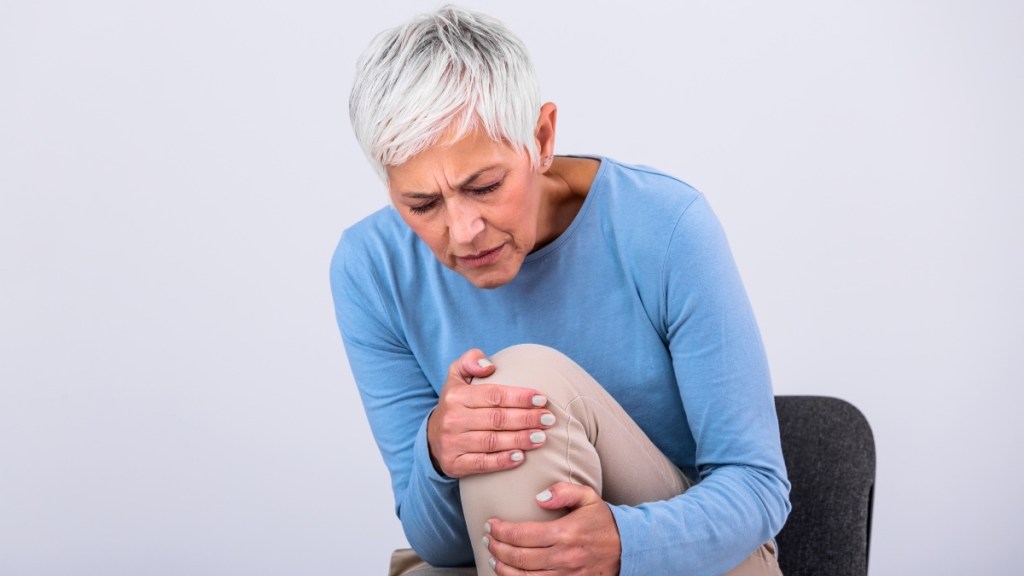
Common causes of inside knee pain
Dr. Paul says when assessing someone for inside knee pain, there are four categories a physical therapist is looking at. “Knee range of motion, the strength of the muscles around your knee and hips, flexibility and body mechanics – how you move, walk, squat and go up and down stairs,” she says. “If any of those categories aren’t up to speed, that’s where we’ll intervene.”
If you have a weakness in one of these categories, here’s what could be causing your inside knee pain.
1. Osteoarthritis
“Arthritis is a degenerative process and it’s unfortunately the most common cause of inside knee pain,” says Dr. Tjong. “Arthritis is a loss of cartilage. You’re born with some cushion in your knee, and it’s a loss of that cushion that causes pain and inflammation that patients experience.”
As Dr. Paul adds, “some patients with osteoarthritis have limited knee range of motion, such as the ability to bend or straighten. Others may notice pain with activity of loading weight on the knee. For these cases, strengthening the quad, hamstring and muscles on the inside and outside of your hips or thigh is important.” (Click through to see our best arthritis self-care tips.)
2. Meniscus tear
“The meniscus is a soft-tissue disc, another type of cushion in the knee,” explains Dr. Tjong. “Meniscal injuries can occur with a degenerative type of pattern but also traumatic or athletic events.” Meniscus tears are common with any activity where you twist or turn your knee suddenly, such as playing pickleball or tennis.
You’ll notice a lot of inflammation and swelling with a meniscus tear, which is diagnosed with an X-ray or MRI. Depending on the severity, treatment can include knee arthroscopy, a minimally invasive procedure that cuts away the torn part of the meniscus, taking ibuprofen and/or working with a physical therapist.
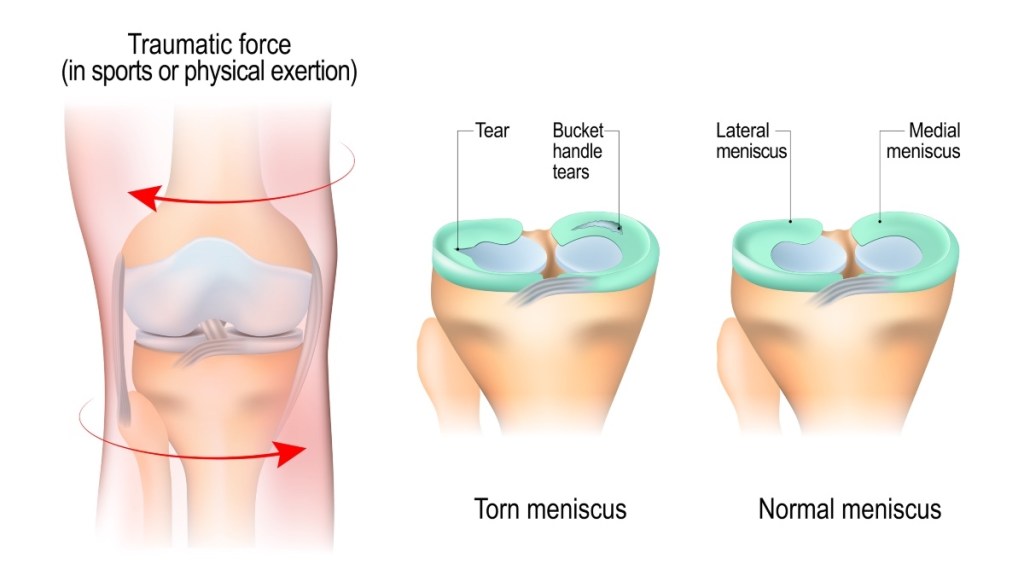
3. ACL or MCL injury
The anterior cruciate ligament (ACL) in the center of the knee prevents it from sliding forward. The MCL on the inside of the knee keeps it from bending too far in. “An ACL or MCL injury will give you more instability than pain in the long run,” says Dr. Tjong. Both of these injuries can happen as a result from years of playing sports, which causes the ligaments to stretch and eventually tear.
ACL or MCL injuries can range from a sprain to a tear. Mild cases can be treated with the RICE formula: rest, ice, compression and elevation. More advanced cases may require an arthroscopy. “Long-term management becomes important with these types of injuries,” adds Dr. Tjong. “Working with a physical therapist will make sure your form is correct when you’re running or exercising, as well as adding weight training to help strengthen the lower extremities.”
Related: Knee Pain When Bending? These 8 MD-Approved Tricks Help End the Ache Naturally
How to soothe inside knee pain
Both Dr. Tjong and Dr. Paul say if your inside knee pain isn’t going away after the normal at-home remedies like RICE and taking an OTC pain reliever, the best first step is to see a doctor for a proper diagnosis. This ensures you’re doing the right exercises and stretches (and not making your knee pain worse). This is especially important if it has been longer than two to three days for swelling that isn’t reacting to OTC medication.
Treating inside knee pain caused by arthritis
If osteoarthritis is behind your inside knee pain, these five home remedies can help.
1. Bike around the block
If you have a few stubborn pounds you’ve been trying to lose, shedding them for good can soothe inside knee pain. “Weight loss is incredibly effective, especially for patients who are overweight,” says Dr. Tjong. “This can help the amount of force that’s going through the knees and ease pain.”
That doesn’t mean you need to log hours at the gym. Start slow by walking for 10 to 15 minutes three days a week if it feel okay to do so. From there, you can increase the time by 5 to 10 minutes a week up to 30 minutes. If walking proves painful right now, consider activities that are less stressful on your joints, like biking, swimming or water aerobics.

2. Try heat — or ice
There’s a lot of debate around ice vs. heat for achy joints. Dr. Paul says for chronic inside knee pain, a warm shower or heat pack can help the knee feel less stiff as it improves blood circulation to the knee. Heat may not be for everyone, but if it feels good for you then use it as a tool to help your symptoms.
If you have an acute injury or swelling with inside knee pain, ice is your best bet, says Dr. Paul. That’s because the cold will constrict blood vessels and slow circulation, which reduces swelling. Compression can also reduce swelling by pushing blood and other fluids out of the knee, which helps improve circulation. Consider using compression ice pack for extra relief.
Related: “Red Light Therapy Cured My Knee Pain” — How One Woman Finally Found Relief
3. Slide your heels
Dr. Paul says the ability to bend and straighten a knee with osteoarthritis is a one of the main problems. To improve your range of motion, try this heel slide exercise:
- Lying flat on your back with your legs straight out, slide the heel of the leg with knee pain up toward your rear end.
- Drag the heel back out away from your body as you straighten your leg.
- Repeat for 30 to 60 seconds.
Tip: If you have access to a stationary bike, Dr. Paul says using it can complement heel slides and improve your range of motion (as long as you can do these things without pain).
4. Stretch it out
This simple stretch helps reduce pain and stiffness.
- Lying flat on your back, roll up a towel and place it underneath your heel so the back of your leg is not touching the ground and there is space under the knee.
- Hold for two to five minutes, so that gravity can weight the knee down, helping it to straighten over time. You can also do this stretch with a light weight (watch the video to see how to do this safely.)
Related: Sore, Creaky Knees? These Stretches for Knee Pain Ease Discomfort and Improve Mobility
Treating inside knee pain caused by an injury
Dr. Paul says when you suffer from a knee injury, it can be because the surrounding muscles aren’t strong enough to help offload forces on the knee. These exercises help improve strength to quash inside knee pain and prevent it from returning.
1. Start by flexing your quads
“This gets the quad and knee firing up again so that you can progress to other exercises,” says Dr. Paul.
- Sit on the floor with your legs straight out in front of you.
- Tighten or contract the quad so that the knee dips down slightly. Hold for five seconds, then relax. Repeat 10 times.
2. Do a glute bridge
“Hip muscles control the position of your femur, your thigh bone and how that moves through space,” says Dr. Paul. “If your hip muscles aren’t as strong as you want them to be, that can cause a deviation in how the knee is postured as you’re walking This adds more force to the knee.”
- Lie flat on your back with your knees bent and feet flat on the floor.
- Squeeze your glutes as you lift your hips up toward the ceiling.
- Slowly lower your hips to your starting position. Repeat for 30 to 60 seconds.
3. Try leg lifts
“The rule of thumb for exercises and stretches is that if it hurts, don’t do it,” says Dr. Paul. “Ask someone to check your knee pain out before you keep going.” If you’re feeling up for it, consider side-lying hip adductor leg raises.
- Lying on your side of the knee that isn’t hurt, bend the bottom leg while keeping your top leg straight.
- Keeping the top leg in line with your shoulder and your knee straight, slowly raise the top leg up in the air.
- Slowly bring the leg back to starting position. You should feel the muscle on the side of the hip engaging in this up and down motion. Repeat for 30 to 60 seconds.
For more ways to soothe knee pain:
Sore, Creaky Knees? These Stretches for Knee Pain Ease Discomfort and Improve Mobility
“Red Light Therapy Cured My Knee Pain” — How One Woman Finally Found Relief
Knee Pain When Bending? These 8 MD-Approved Tricks Help End the Ache Naturally
This content is not a substitute for professional medical advice or diagnosis. Always consult your physician before pursuing any treatment plan.





